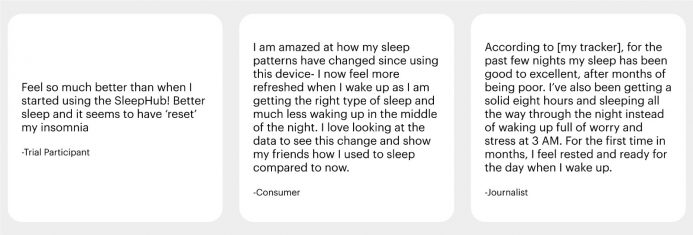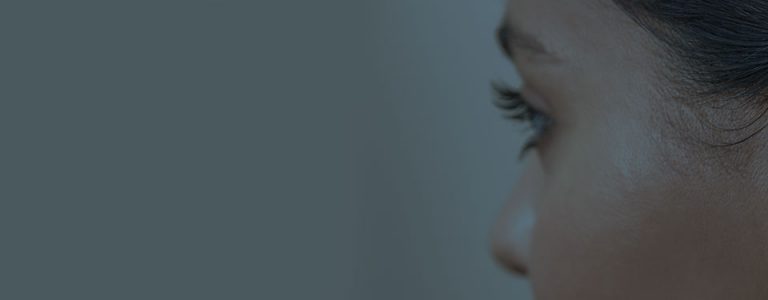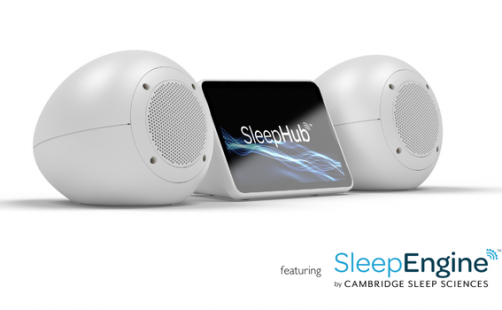Cambridge Sleep Sciences X Ultrahuman
Written by: Aditi Bhattacharya, Andy King, Chris Dickson, Sama Dalal
Insomnia: Prevalence, Causes and Impact on Health
Insomnia, characterised by difficulty falling asleep, staying asleep, or both, is one of the most prevalent sleep disorders globally. Acute insomnia occurs over a short period, typically lasting a few days. Chronic insomnia, on the other hand, is diagnosed when these symptoms persist for at least three nights per week over a duration of more than three months 1. The Centers for Disease Control and Prevention (CDC) recommend at least seven hours of sleep per night for adults, yet nearly one-third of adults in the US fail to meet this benchmark. According to the STADA Health Report in 2022, 35% of Europeans struggle to get a full night’s rest- an increase of 15% from 2021. People in the UK, France (43% each) and Spain (42%) have the poorest quality of sleep 2. The American Academy of Sleep Medicine (AASM) reports that about 30-35% of adults experience acute insomnia symptoms, while 10% suffer from chronic insomnia 3. Furthermore, recent studies indicate that up to 75% of older adults experience symptoms of insomnia 4.
Although the exact pathophysiology of insomnia is unknown, there are a number of complex processes that interfere with regular sleep cycles. Sleeplessness may be brought on by factors such as depression, anxiety, persistent pain, hormonal fluctuations, substance abuse, diet, and a host of other factors 5. For instance, anxiety might lead to hyperarousal, a condition of increased mental and physical alertness that interferes with falling and staying asleep. Travel-induced jet lag breaks the circadian rhythm, which controls the sleep-wake cycle, making it difficult to get quality sleep. Additionally, hormonal and neurotransmitter imbalances, which involve chemicals that affect the homeostatic sleep drive, have also been implicated as potentially contributing factors towards the onset and persistence of insomnia.
The United Nations' Sustainable Development Goals (SDGs) aim to reduce premature mortality rates from non-communicable diseases by a third by the end of 2030 6. However, sleep disorders such as insomnia not only hinder quality of sleep but also are risk factors that increase the prevalence of non-communicable diseases and decrease quality of life. A lack of sleep directly increases the risk of obesity and type 2 diabetes mellitus 7. Chronic insomnia also triggers cognitive impairments with symptoms such as altered attention spans and episodic memory 8. Moreover, insomnia significantly impacts overall quality of life, as demonstrated by studies indicating a strong correlation between sleep disorders and decreased life satisfaction and daily functioning. A 2005 US National Health and Wellness Survey reported a significant decrease in physical and mental quality of life, higher work productivity loss, as well as greater activity impairment in association with insomnia 9. An international study by RAND in 2023 estimated that workers who experience any symptoms of insomnia miss 14 days of work every year and spend another 30 days at work not being fully productive. Chronic sufferers were estimated to be absent for up to 18 days and present but not productive for up to 54 days annually. The UK loses 1.3% ($41.4 billion) of its output every year. France loses around $36.3 billion each year whilst Australia and Canada both lose more than $19 billion per year 10. This emphasises the social and economic importance of early identification and treatment of insomnia to mitigate these adverse outcomes.
Since sleep is continuum, for most people subtle early signs are often missed making future treatment and rehabilitation more complex. Therefore, it is very important to gather real-time, continuous data to explore the exact causes of insomnia.
Wearables for continuous health data: findings from the Ultrahuman database
The user base of Ultrahuman Ring AIR primarily consists of individuals who invest in health optimization. Early sleep disorders lurk even among people with high commitment to wellness. We analysed sleep patterns across the entire Ultrahuman user base to evaluate the prevalence of poor sleep patterns as characterised by low sleep duration, frequent sleep disruptions in terms of awake episodes and lower sleep efficiency- the percentage of time spent asleep in a given sleep session. We identified a section of users with poor sleep signatures for at least two months indicating that these users grapple with potential sleep deficits on a regular basis. In addition, we observed sporadic (10-15 day periods of poor sleep) to be more prevalent.
Comparing the sleep profiles of these two groups revealed interesting trends as shown in Figure 1. Since sleep profiles change with age, we also segmented the population based on age ranges (20-40, 40-60, 60+ years). Overall we found comparable sleep volumes suggesting that most users experienced acceptable sleep quality. In contrast, users with poor sleep exhibited significantly lower sleep scores across all age categories amounting to a regular ~30% sleep deficit. In concert, the resting heart rate was elevated (5-6 bpm) across all age groups among the poor sleepers. Elevated sleep heart rate has been linked to impaired recovery and repair, which if persistent long-term can lead to many chronic conditions 11.

Sleep disorder support: SleepEngineTM technology by Cambridge Sleep Sciences
SleepEngineTM is a unique, scientifically developed sound technology which helps users experience improved sleep quality and correct poor sleep habits. Neuro-acoustic algorithms played during the night whilst sleeping restore natural sleep by retraining the brain to form optimal, natural sleep patterns. Research shows that sound is a powerful and effective means of changing brain state and it is understood for example, that low frequency sounds are linked to relaxing brain states 12. SleepEngineTM uses binaural beats to recreate brain activity that occurs during healthy sleep to guide the brain through the right sequence of sleep cycles and sleep stages 13. A binaural beat is a third tone created by the brain when two different tones are heard by each ear. When played over a period of time, a binaural beat can affect brain activity, influencing a person’s state of consciousness. Sleep is optimised for users as they fall asleep quicker, stay asleep for longer and experience better quality sleep to help realise wellbeing, cognitive and physical health benefits.
The scientifically formulated sound waves are delivered using a variety of stereo audio formats including wired speakers (used with the SleepHub® product), headphones and earbuds. Working with partners on a licensing basis, SleepEngineTM delivery is expanding to include pillows, mattresses and streaming with wireless audio systems.
SleepEngineTM technology was first trialed in a study using SleepHub®, an electronic bedside device which uses two speakers to deliver the scientific sleep sounds 14. Participants were experiencing at least 3 months of insomnia prior to the start of the trial. The Pittsburgh Sleep Quality Index was used to measure the impact of using SleepHub®. Results showed that 92% of participants saw a positive improvement in their sleep. Figure 2 shows specific results demonstrating on average per night, more time asleep, less time awake and a reduction in the number of times waking up.

At the time of writing, a second SleepHub® trial is in progress and the results will be published once the trial has completed. The SleepHub® device, using the SleepEngineTM technology, is being used worldwide by those who have issues with their sleep, such as insomnia. Whilst specific monitoring of sleep quality is not a function of the product, SleepHub® users have provided anecdotal evidence of a range of improvements in their sleep when using the product. Examples of user feedback include:

Ultrahuman and Cambridge Sleep Sciences partnership bridges a gap in the treatment landscape for insomnia
The Ultrahuman and Cambridge Sleep Sciences partnership bridges a critical gap in the treatment landscape for insomnia. Using the exclusive SleepEngineTM neuroscience and sound technology paired with advanced sleep analytics from the Ultrahuman Ring AIR, users will ultimately have a feedback loop on how soundwaves can influence brain activity and improve their sleep. Significantly, users will be able to realise the benefit of combining both technologies, enabling them to access real-time changes to sleep patterns while they sleep. The power of continuous biomarker tracking is enhanced when there are real-time interventions made such as the sleep optimisation delivered through the SleepEngineTM technology. This is a revolutionary step towards personalised sleep and improving sleep quality for many around the world, particularly those who experience insomnia.

Future Directions
Further information
References
1. Johns Hopkins Medicine (n.d.). Insomnia.
2. STADA. (n.d.). Sleep disorders on the rise.
3. Healthline. (n.d.). Facts and stats on insomnia.
4. Nguyen V, George T, Brewster GS (2019). Insomnia in Older Adults. Curr Geriatr Rep. 8(4), 271-290. PMID: 33312842
5. Dopheide JA (2020). Insomnia overview: epidemiology, pathophysiology, diagnosis and monitoring, and nonpharmacologic therapy. Am J Manag Care. 26(4 Suppl), S76-S84. PMID: 32282177
6. Ugliara Barone MT, de Castro Moreno CR, Micheletti Gomide Nogueira de Sá AC, Junio Sady Prates E, Silveira J (2023). Sleep disorders are an overlooked risk factor for non-communicable diseases. BMJ 383-2721. PMID: 37984981
7. Healthline (n.d.). The impact of diabetes on sleep.
8. Fortier-Brochu E, Morin CM (2014). Cognitive impairment in individuals with insomnia: clinical significance and correlates. Sleep. 37(11), 1787-98. PMID: 25364074
9. Bolge SC, Doan JF, Kannan H, Baran RW (2009). Association of insomnia with quality of life, work productivity, and activity impairment. Qual Life Res. 18(4), 415-22. PMID: 19288223
10. Petrou, S., & Baker, C. (2023). Insomnia: The multibillion-dollar problem sapping world productivity. RAND Corporation.
11. Calhoun DA, Harding SM (2010). Sleep and hypertension. Chest. 138(2), 434-43. PMID: 20682533
12. Tang, J. H., Tang, J. H., & Tang, Y. (2018). Rhythmic stimulation of human brain using embedded neuro soundwave. Neuro Code Research Centre.
13. Krasnoff, E. (2021). Effects of auditory binaural beats on consciousness and the human nervous system: A transdisciplinary review of the evidence. Brain Stimulation, 14(6), 1337-1351.
14. Sounding out the SleepHub - study carried out by CMR (2016). Unpublished.



